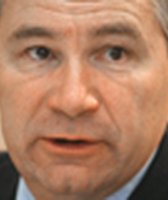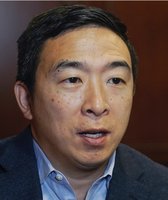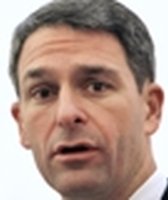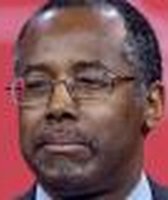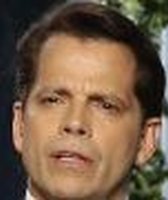Stand up for the facts!
Our only agenda is to publish the truth so you can be an informed participant in democracy.
We need your help.
I would like to contribute
A viral video shows one of President Donald Trump’s judicial nominees struggling with a series of legal questions lobbed his way during his Senate confirmation hearing.
Matthew Petersen, a nominee for a federal judgeship and a member of the United States Federal Election Commission, found himself in a harsh spotlight after he was unable to define a series of legal concepts and procedures, some of which a trial judge would be expected to have at his fingertips on day one.
"MUST WATCH: Republican @SenJohnKennedy asks one of @realDonaldTrump’s US District Judge nominees basic questions of law & he can’t answer a single one. Hoo-boy," tweeted Sen. Sheldon Whitehouse, D-R.I., referring to a back-and-forth between Peterson and Sen. John Kennedy, R-La.
MUST WATCH: Republican @SenJohnKennedy asks one of @realDonaldTrump’s US District Judge nominees basic questions of law & he can’t answer a single one. Hoo-boy. pic.twitter.com/fphQx2o1rc
— Sheldon Whitehouse (@SenWhitehouse) December 15, 2017
In case Petersen, or anyone else, needs a crash course, we reached out to legal experts to get answers to the questions that Trump’s nominee flunked.
Kennedy, a Republican from Louisiana and a lawyer, asked Petersen to define a "motion in limine." Petersen demurred, saying he hasn’t had to "do a deep dive" due to his lack of litigation experience.
A motion in limine typically takes place before a trial, and occurs when a party to a lawsuit asks a judge to rule on whether certain evidence may be later shown to a jury. These pretrial motions can carry high stakes, as they help shape the contours of the legal arguments to be presented at trial.
"The idea is to get these things out of the way before the jury is impaneled, and to make sure the judge has some time to think about the issues instead of having to rule on the spot," said Richard Marcus, a law professor at the University of California Hastings.
Hashing out what pieces of evidence are admissible before the trial also helps reduce the likelihood that jurors are accidentally exposed to evidence that’s later found to have been inadmissible, said Edward Cheng, a law professor at Vanderbilt University.
"What you don’t want to have happen is that the evidence is presented in court, the jury hears it, then judge says, ‘That wasn’t admissible: You’ve heard it, now disregard it,’ " Cheng said.
Asked about the "Daubert standard," Petersen replied that he didn’t "have it readily at my disposal."
Daubert refers to the Supreme Court’s 1993 decision in Daubert vs. Merrell Dow Pharmaceuticals. In this opinion, the Court laid out guidelines — known as the Daubert standard — for how judges should assess the scientific validity of an expert witness’ testimony.
"The Court in Daubert said that the judge must act as a ‘gatekeeper’ to exclude unreliable expert opinion evidence. It is now partly embodied in the Federal Rules of Evidence," Marcus said. "This is something all litigators know about."
Cheng noted with disappointment that Petersen failed to even attempt an answer.
"You either know it, or you prepare, or you at least try to engage," he said. "The ‘pass’ is the most infuriating answer."
Petersen was similarly unable to field questions about the legal concept of abstention, though in fairness, this issue is more esoteric than the other questions he faced, lawyers say.
Abstention arises when one court delays or declines to decide a legal question at the same time that another court is considering the same or similar issue.
A court would abstain in order to give deference to the other court’s forthcoming ruling, or to avoid the inefficiency of two courts grappling with the same issue, Cheng said.
Petersen was asked specifically about the legal doctrines that emerged from two landmark Supreme Court cases dealing with abstention, Pullman and Younger.
The Pullman abstention doctrine refers to the 1941 Supreme Court decision in Railroad Commission vs. Pullman Co., which says that federal courts should abstain from hearing certain cases within their jurisdiction when the case can be resolved by a state court applying state law, Marcus said.
Younger vs. Harris was a 1971 case in which the Supreme Court said that federal courts should abstain from deciding a case when the issue involves a challenge to certain criminal and "quasi-criminal" proceedings in a state court, Marcus said.
"This is probably not something a judge needs to know at the drop of a hat," Marcus said.
While Marcus gave Petersen some leeway on the more obscure question of abstention, he said that "having no particular background in any of the things that federal district judges do is a reason for some concern."
"When it comes to the things that district judges need to do on an everyday basis," he added, "I think that he seems remarkably limited in his experience with those things."
Our Sources
Daubert vs. Merrell Dow Pharmaceuticals, 1993
Railroad Commission vs. Pullman Co., 1941
Younger vs. Harris, 1971
Email interview with Richard Marcus, a law professor at the University of California Hastings, Dec. 15, 2017
Interview with Edward Cheng, a law professor at Vanderbilt University, Dec. 15, 2017














